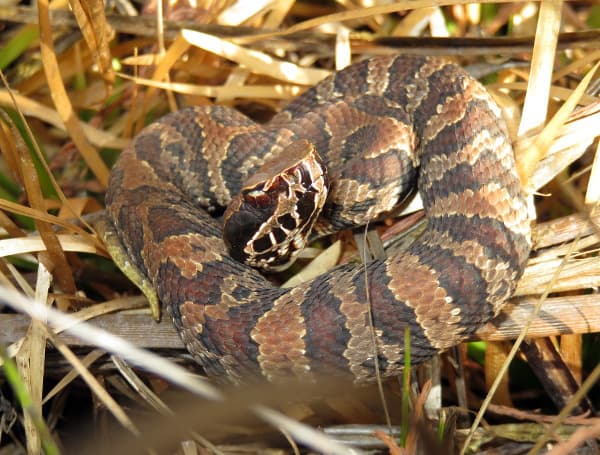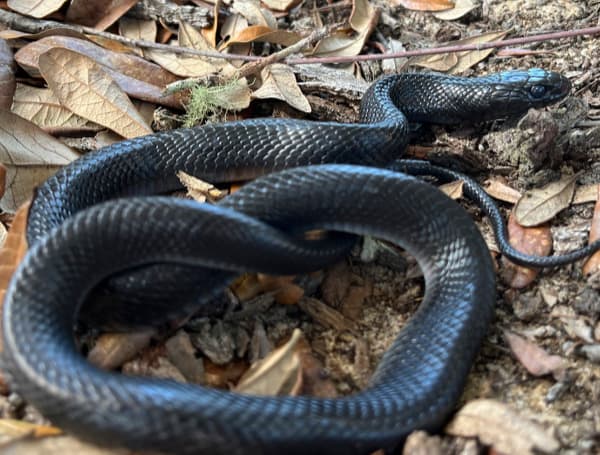With over 80 distinct ecosystems and more than 4,000 native animal species, Florida is a global biodiversity hotspot. As the Sunshine State’s weather continues to warm, a growing number of species are becoming more active, leading to increased interactions with humans.
To foster understanding and promote safe coexistence, the UF/IFAS “Florida Critter of the Month” series is highlighting native animals that residents and visitors are likely to encounter, offering “bite-sized” guides to their behavior.
This month, the spotlight is on Florida’s diverse snake population. Steve Johnson, a professor in the UF/IFAS Department of Wildlife Ecology and Conservation, offers valuable insights into these often-misunderstood reptiles.
READ :Bear Sightings On The Rise In Florida As Juveniles Disperse
“Florida is home to about 50 species of native snakes, and there are an additional five species of established, introduced species,” explains Professor Johnson. Among the native species, six are venomous: five pit vipers (three rattlesnakes, the cottonmouth, and the copperhead) and the Eastern coral snake (also known as the harlequin coral snake). While all pit vipers give birth to live young, the Eastern coral snake lays eggs. The remaining 44 native non-venomous species are split, with roughly 20 laying eggs and 20 giving birth to live young.
Florida’s native snakes can be found in a remarkable array of habitats, from dry upland forests to lowland swamps and marshes. Remarkably, one species of water snake has even adapted to live in mangroves and salt marsh environments.
When it comes to activity, many Florida snake species are active year-round, though their peak activity occurs during the warmer months. While some species are nocturnal, others are more active during the day. During the hottest periods of the year, snakes will shift their activity to the cooler nighttime hours to avoid extreme heat. Certain species, which spend a significant amount of time underground, will become more active on the surface after rainfall.
READ: UF/IFAS Scientists Develop Method For Detecting DNA Of Invasive Snakes In Florida
The warmer months also signal breeding season for many Florida snakes. Professor Johnson notes a fascinating behavior observed in some species: “In some species, two males will fight each other in a ritualized combat for the ‘right’ to mate with a female.” This ritualized combat has been documented in Eastern diamond-backed rattlesnakes, timber rattlesnakes, cottonmouths, and Eastern indigo snakes.
So, what should you do if you encounter a snake? Professor Johnson emphasizes the importance of observation from a safe distance.
“Snakes are really interesting animals that play important roles in Florida’s natural environment,” he states. “Only a few species pose any danger to people or pets, and the best way to avoid a negative encounter with a venomous snake is to just leave it alone.”
He strongly advises against attempting to harm or harass a snake, as this significantly increases the risk of a bite.
Dispelling a common misconception, Professor Johnson addresses the reputation of the cottonmouth.
READ: Help Track Florida’s Reintroduced Eastern Indigo Snakes
“Cottonmouths have a misguided reputation as being inherently aggressive toward people,” he clarifies. “Like all snakes, cottonmouths will try to avoid conflicts with people. If approached, they usually remain still. If on the move, they will try to flee.” If cornered or unable to escape, a cottonmouth’s warning display involves holding its ground and opening its mouth to reveal its distinctive cotton-white interior – a clear signal for potential threats to stay away.
By understanding the behaviors and habitats of Florida’s native snakes, residents and visitors can safely appreciate these vital components of the state’s rich biodiversity. The UF/IFAS “Florida Critter of the Month” series aims to continue providing valuable information to promote harmonious coexistence with Florida’s incredible wildlife.
Please make a small donation to the Tampa Free Press to help sustain independent journalism. Your contribution enables us to continue delivering high-quality, local, and national news coverage.
Connect with us: Follow the Tampa Free Press on Facebook and Twitter for breaking news and updates.
Sign up: Subscribe to our free newsletter for a curated selection of top stories delivered straight to your inbox.

